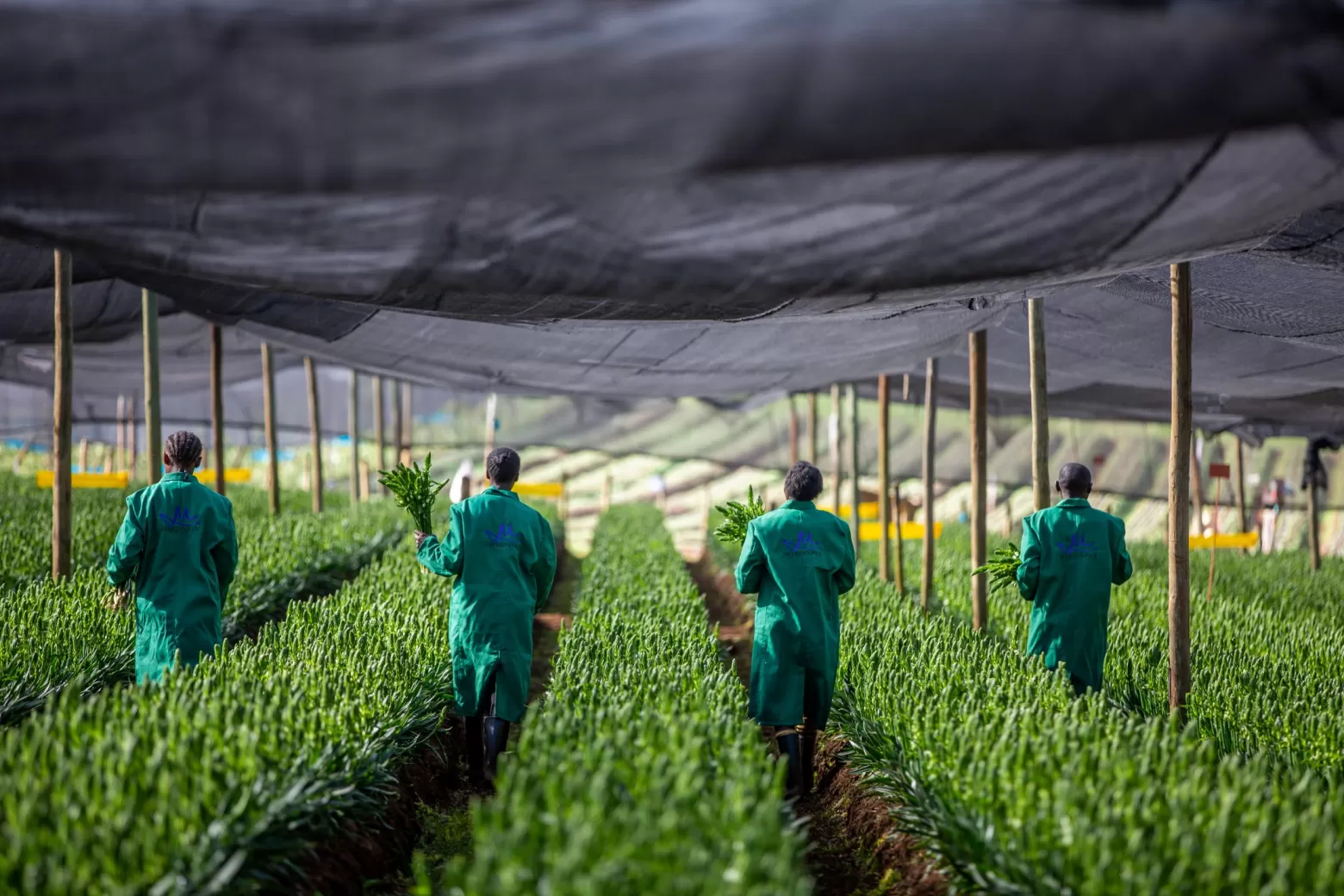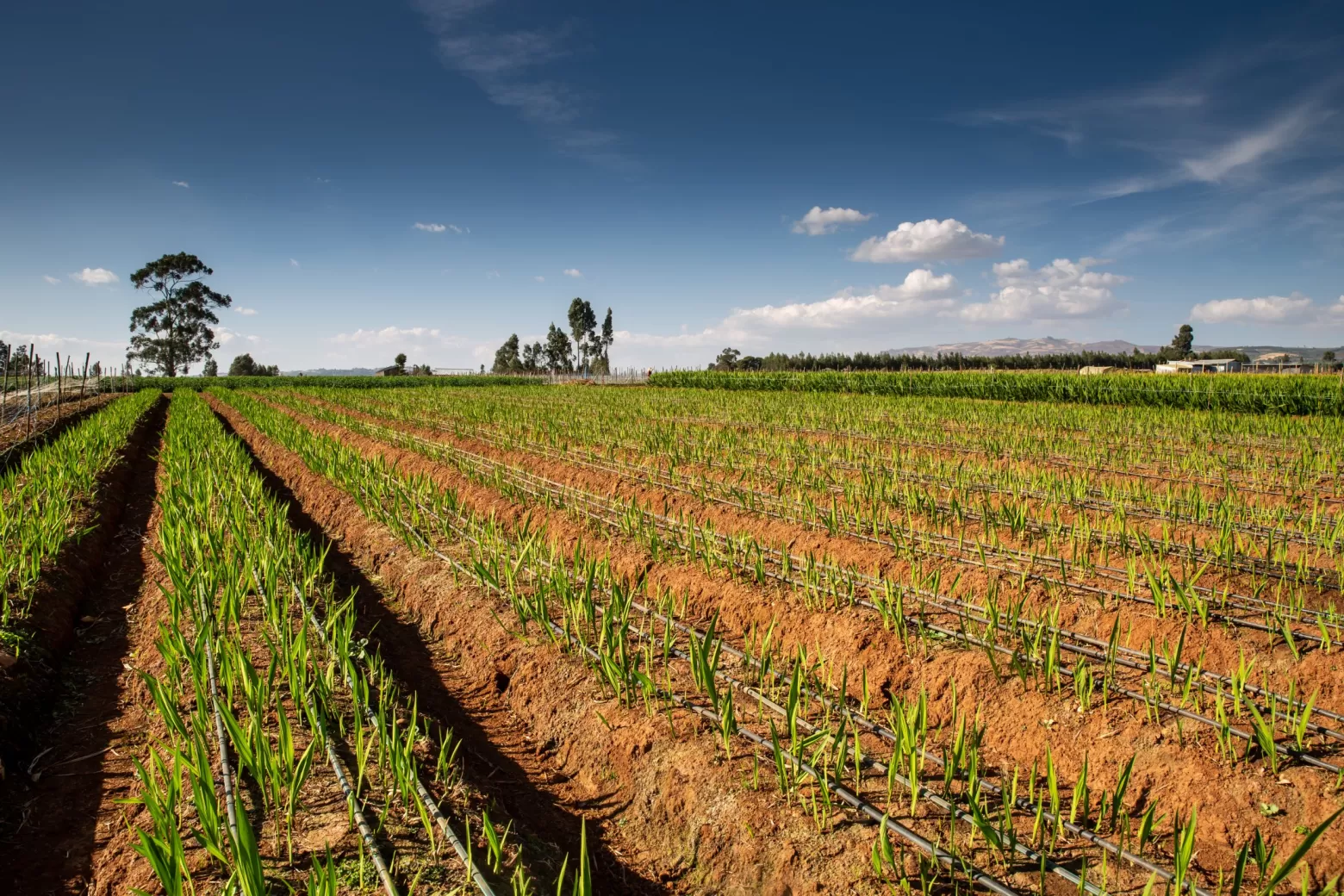
arginpar grows more than 100 varieties of summer flowers on 16 different geographical locations and altitudes. This Makes it possible to grow every flower in the perfect spot. We hold 7 locations in Kenya, 3 locations in Ethiopia, cooperate closely with 3 partner farms in Tanzania and 4 partner farms in Zimbabwe. In the Netherlands, next to the flower auction, We have a headquarters where our flowers arrive to be checked, cut, and prepared for distribution to various flower auctions and sales partners. It also houses various divisions such as sales, marketing, product development, finance, etc. We employ almost 4000 people within the Marginpar Group, And our partner farms count for an additional 1000 people. That’s 5000 people who put a lot of patience, care, and love into our flowers.

The benefits of growing on and around the equator
Around 75% of our production derives from flower farms situated on or close to the equator. Why is that?
The equator is a line of latitude on the surface of the earth in the form of a great circle midway between the poles. The equator divides the Earth into a Northern Hemisphere and a Southern Hemisphere.
On the equator, the sun always shines from almost directly above. Therefore, on the equator it is generally warm and there is little seasonal variation. However, there is often a wet and a dry season. That is why our supply is highest during the European winters, the ‘dry period’ on the farms. On average, the strength of the sun is greatest on the equator. Another peculiarity is that the day and night around the equator are almost equally long. This combination of favourable growing conditions makes our flowers grow long and strong.
The production on the north (Ethiopia) and south (Zimbabwe & Tanzania) of the equator complement the production on the equator (Kenya) with excellent quality and volumes of flowers in peak demand periods. The Zimbabwean quality and volumes are exceptional in the European autumn, and this is similar for the volumes and quality from Ethiopia in the European spring.

Kenya
Marginpar Kenya embodies seven flower farms spread over several regions. Each region has its own characteristics that contribute to the perfect growing climate for our flowers.
Read about our Kenyan farms here.
Ethiopia
Marginpar Ethiopia covers 60 hectares of cultivated area, spread out over three production sites, located near Holeta, west of the capital Addis Ababa (‘New Flower’), at an altitude of 2,500 meters.
Read about our Ethiopian farms here.

Tanzania
Nestled in the foothills of Kilimanjaro, you will find our Tanzanian partner farms. The warm climate is perfect for various warmth loving crops, such as Jatropha, Polianthes and Gloriosa. They also specialise in the cultivation of cut Clematis, which thrive in this part of the world thanks to the high day and night temperatures. The mountainous location is also a plus. There is also an abundance of water nearby, with the Pangani River flowing from Kilimanjaro to the Indian Ocean. The farms are as keen on innovation as we are and strive for the best. We are proud to say that their MPS status is A+. In the process of achieving this status, they have attracted thousands of bees to the farms, which in turn help improve the ecosystem. One of their goals is to set up a beehive and start keeping bees of their own. Other goals include using more organic pesticides, installing more solar panels and implementing the Kaizen philosophy.
Read about the Tanzanian farms here.
Zimbabwe
More than three decades ago, this is where the Marginpar story began: Zimbabwe. Marginpar started here in 1988, as an agency for vegetable growers, which changed pretty quickly into an agency for flower growers. The Marginpar flower brand was born. Eryngium and Hypericum were the first plants imported from the Netherlands to Zimbabwe. Never before had they set roots in African soil. At its peak in 2003, Marginpar B.V. accommodated 25 growers in Zimbabwe. Due to political unrest and the wish for year-round production, Marginpar started looking at other production countries. Today, there are three partner farms in Zimbabwe that grow Marginpar flowers under licence.
Read about the Zimbabwean farms here.



